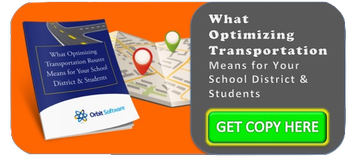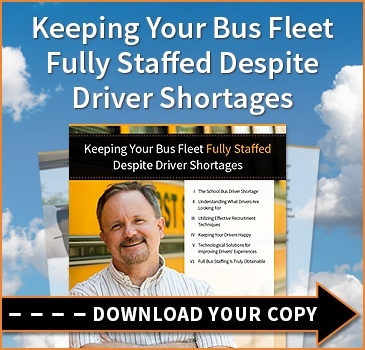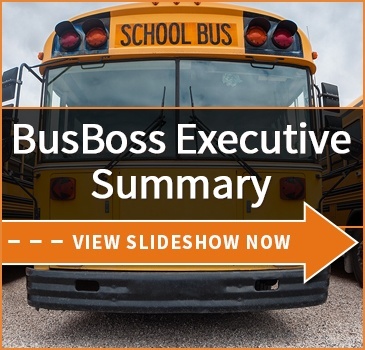How To Know When Your Bus Routes Are Safe And Efficient
published on May 06, 2014 by Sonia Mastros
bus routing software, bus tracking, GPS Tracking

If there are two watchwords for a modern school bus system, they should be “safety” and “efficiency.” Since a school's transportation budget can be one of their biggest money drains, virtually anything that decreases the costs of transportation will benefit your school's bottom line.
However, of course, this has to be done without endangering your students in any way.
With modern computing systems, this balance is actually easy to achieve! With a modernized bus routing system, you honestly can produce bus routes that are safer and cheaper to run.
Five Signs That You're Producing Safe, Efficient Bus Routes
I. You're Using Routing Software, Not Handmade Maps
There's no better single way to increase the efficiency and safety of your bus routes than investing in a robust piece of bus routing software. Software licenses are affordable for any district, and such a piece of software can produce a complete set of routes within minutes... rather than taking months.
This kind of optimization – comparing thousands of possible routes – is exactly the sort of problem that's trivially simple for a computer, but incredibly difficult for a human. You'll never have well-optimized maps when they're being made by hand, which means you're probably spending unnecessary money on every bus run.
II. You're Producing Multiple Experimental Maps
The power to create maps instantly also confers another ability: to quickly make and compare a variety of different routes, using different routing criteria. You could:
-
Add bus stops, to reduce student walking distance – one of the most dangerous parts of busing.
-
Reduce bus stops, potentially even eliminating entire bus routes.
-
Create “tiered” bus routes, where the same buses make several runs in a day.
-
Optimize for fuel efficiency, picking roads that reduce waste.
-
Deliberately route around high-traffic roads which frequently suffer from traffic jams.
-
Prioritize time, looking for the shortest\fastest routes regardless of fuel use.
Depending on the district, any of these – or a combination – could ultimately produce safer and more cost-effective maps. Experimentation shows you the options at your disposal.
III. Your Buses Avoid “Danger Zones”
While some districts may be lucky enough to not have significant internal problems, most of them are going to be in towns with areas where students just should not go. Perhaps they're known for drug or gang activity, or perhaps there's a registered sex offender, or it might even be a city's “red light” district.
Either way, bus routing software allows you to create “danger zones” that the system won't utilize for stops or routing. This is probably the simplest and easiest way of ensuring students are never accidentally dropped off in an area that would be unhealthy for them.
IV. You're Tracking Bus Performance Via GPS
On-board GPS systems are quickly becoming a standard on school buses, and for good reason: They provide an incredible wealth of data on bus performance and safety, far beyond what your drivers could track and record manually.
This tracking can include:
-
To-the-foot measurements of every bus's real-world route.
-
Exact fuel economy calculations.
-
Driver performance, such as speed and stopping distance.
-
Legal adherence, like fully stopping at all railroad crossings.
-
Any shortcuts or alternate routes a driver discovers, such as avoiding congestion.
All this just adds to your ability to optimize your routes and improve bus safety. The data collected by a GPS unit can even be used for predictive maintenance. Something like a 10% drop in gas mileage could go unnoticed by a driver, but sends up a red flag within the software.
This alerts your maintenance crew at the earliest possible opportunity that work may be needed, often long before a minor problem becomes dangerous.
V. You Don't Stop Optimizing
Strictly speaking, there's no such thing as a 100% perfectly optimized bus routes. In practical terms, there will always be something you can tweak to get better performance, or safer options for your students.
So, going forward, these software solutions will just continue to pay off over the years to come. As students come and go, or the roads in your district change, newly-optimized maps are always just a few clicks away. In fact, if you're looking at a redistricting or other large-scale change, you can even produce collections of hypothetical routes to aid in the planning process.
Ultimately, having an optimized bus system requires vigilance and constant updating. That's the real long-term value of bus routing software. It's a solution you can turn to whenever it's needed, and you'll likely find new gains every time you do.
Orbit Software is dedicated to helping you ensure your students make it to and from school safely every day, with a minimum of expense. To learn more about how our affordable software solutions can produce real ongoing returns, just contact us for more information or a free demo!






